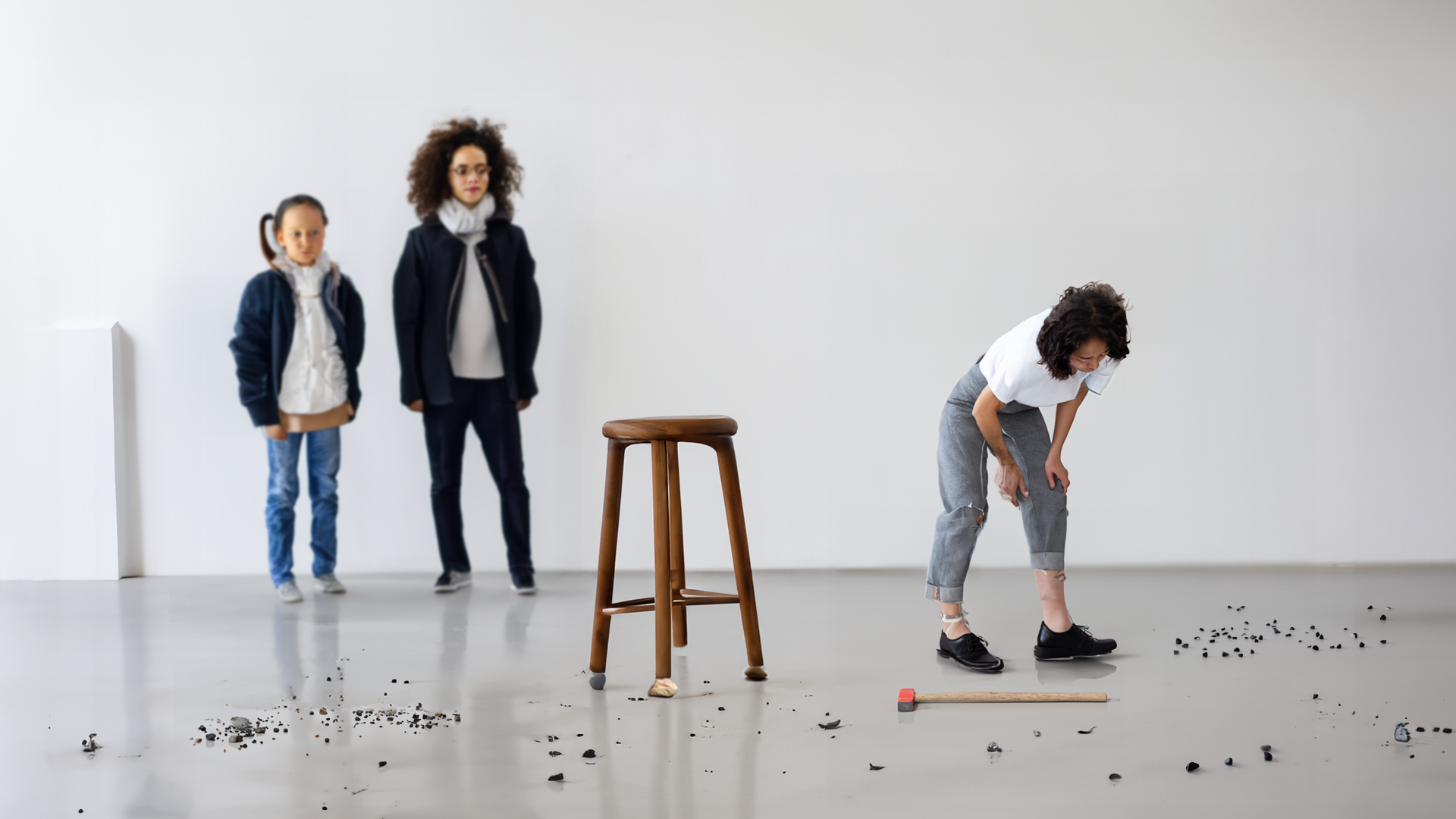Forever pivoting is a performance, yet in a storyboard, to be performed when enough fund is raised.
Images from the slideshow below are A.I generated, to help illustrate the written script of the performance.

Site requirement:
- An empty space ranging from 25m2 (5m x 5m) to 49m2 (7m x 7m), enclosed by walls.
- An exit from the space, leading outdoors or to a different area separated by walls.
- Free of loud exterior noises, maintaining a level below 60dB by default.
- Lighting conditions may vary.
- Space height and building materials may vary.
- The number of audience members participating in the performance may vary.
Stage setting:
-
A round wooden stool with a height greater than 700mm is placed at the center of the room space.
- A 6m diameter area around the stool is set as the stage for this performance.
- A speaker, mounted on a stand emitting sound at a height of 1600mm, is placed at a distance of 4m from the stool.
- A replica of the speaker is placed on the opposite side of the stool at the same distance.
- A sledgehammer is placed anywhere on the stage floor.
- The audience is asked to stand outside the stage area.
Performer:
-
Any volunteer or hired individual who does not have mobility, hearing, or visual impairments.
Performance:
Prelude: The speaker repeats an hour-long recording of audio captured in the woods, recorded while standing in a small opening area (no location or time specified). It includes the sounds of wind, trees, bugs, birds, and occasional unidentifiable rustling noises from a distance.
Phase 1: The performer walks in the room and enters the stage holding a white blanket containing rocks (and pebbles, but will be called rocks in this document to avoid confusion) collected before the performance. Then, unfold the blanket on the
floor somewhere around the stool.
Phase 2: The performer picks up a rock and positions it beneath one of the stool's legs. This process is then repeated until rocks are placed under all four legs of the stool.

Phase 3: The performer sits on the stool and closes their eyes. They listen to their surroundings until a significant sound is heard. Then, they open their eyes and react to the sound by rotating their body to face towards it while remaining seated. Afterward, they close their eyes again and repeat this process until a rock under the stool falls out of its place.


Phase 4: The performer gets off the stool and walks to pick up the hammer from the floor. They locate the fallen rock and smash it once using the hammer. The strength or manner of smashing can be varied, while considering their own risk of danger (safety goggles can be provided if required).

Phase 5: The performer replaces the fallen rock with a new one from the pile. Then, they repeat from phase 3 until the one-hour scheduled performance ends.

Phase 6: A staff member is asked to notify the performer of the end of the scheduled performing slot. When it comes to an end, the performer leaves the room.
After a thirty-minute break, the performer enters the stage and repeats from Phase 2.
Phase 7: When there are no more rocks on the blanket, the performer picks up any particled rock on the stage floor to continue with 'Phase 2'.

Notes:
- The performance ideally continues until there are no more significantly sized rocks in the room.
- The one-hour performance can be played up to 4 times a day.
- When all the scheduled performance ends, the residues and particles of the rocks are to be collected and wrapped using the blanket from the performance. That marks the conclusion of the performance.
